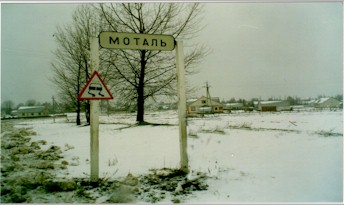|
In Jehuda Reinharz’s book,
Chaim Weizmann: The Making of a Zionist Leader,
two stories are told about the founding of the town of Motol, both having taken place in the mid seventeenth
century. In one, the original town was destroyed by Chmielnicki’s
Cossacks and, in the other it was destroyed during the Swedish invasion of
Poland. In both cases, a Jew
named Motol or Mordechai survived the destruction and erected a building that
then or later became a tavern or inn that was frequented by travelers or
merchants on their way from Minsk to Pinsk and Pinsk to Minsk. Perhaps it is that tavern that gave rise to the saying, “from Minsk
to Pinsk and Motele on Shabbas.” In
any case, by 1847 the Jewish population grew to 222, and in another fifty
years totaled 1,354 among the 4,297 inhabitants of Motol. (Reinharz, 1985).
Motol is
located about 20 miles west of Pinsk on the Yasolda River in a region called
Polesie made up mainly of forest and the marshlands from the many tributaries
of the Pripet River. According to
Reinharz, the economy was always very poor in that region. The timber industry was central to the economy. In addition, livestock could be raised on pastureland.
The small amount of cultivated land produced various grains and
potatoes; and fishing, beekeeping and horticulture also formed part of the
economy. (Reinharz, 1985).
Polesie was
part of Poland until the various partitions during the eighteenth century. After Napoleon’s defeat, Russia annexed eastern Poland, and Polesie
became part of the Pale of Settlement, the area designated for Jewish
habitation. The area was
subdivided into provinces, called guberniyas. Motol was located in Grodno Guberniya in the Kobrin District. Many of our ancestors lived in Motol during the time Chaim Weizmann
described it in his autobiography,
Trial and Error.
When Chaim Weizmann and his family lived in Motol, “There was no post
office. Mail was brought in by
anyone from the townlet who happened to pass by the nearest railway station on
his own business...But letters played no very important part in our lives;
there were few in the outside world who had reason to communicate with us.”
(Weizmann, 1949) Again according
to Reinharz, contact with other communities took place primarily at
marketplaces in the surrounding area – Pinsk, Kobryn, Stolin, Lunynets,
Mozyr, Kamien, Kosirski, Sarny and Ovruc.
|



